|
|
|
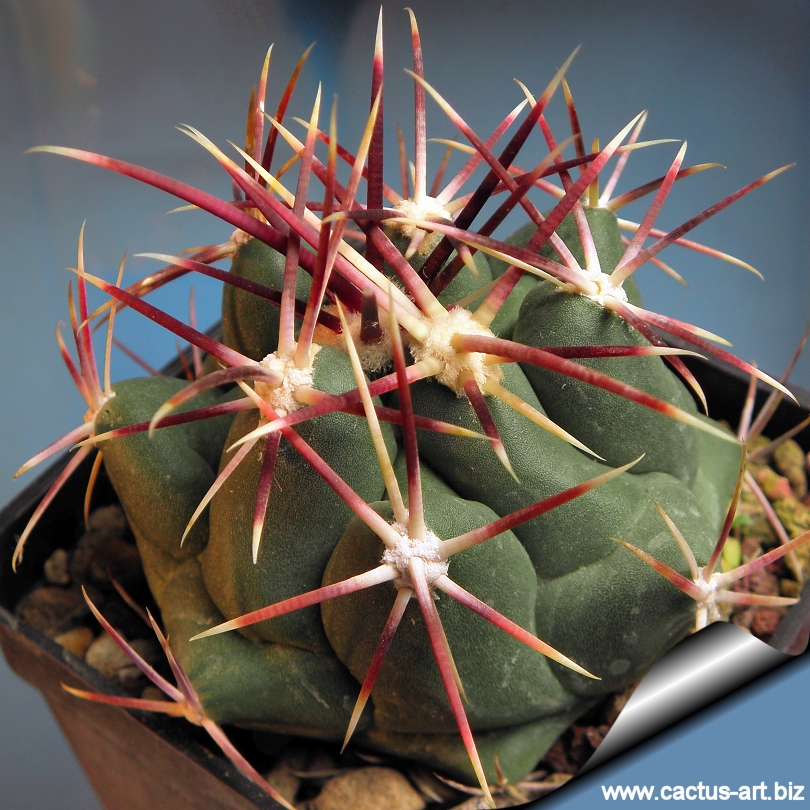
Thelocactus bicolor ssp. heterochromus is heavily armed with amber to
reddish spines and produces magenta flowers with a reddish throat in
spring.
|
|
Description: Usually solitary. Like
many cactus forms of dry, hot region of Mexico, plants are strongly
variable; therefore a precise description is impossible.
Stem: Depressed to globose, 4-7 cm tall, 6-15 cm wide.
Ribs: 8, distinct.
Tubercles: rounded.
Areoles: Without glands.
Central spines: 1-4, 20-50 mm long, ochre to reddish, straight,
subulate.
Radial spines: 6-10, 16-40 mm long, ochre to reddish, straight,
acicular to subulate.
Flowers: 45-80(-100) mm wide, Deep pink- magenta with a red
throat , base orange,
Blooming season: Flowers appear exclusively from June through
August.
NOTE: This is the westernmost taxon in the genus. Usually, it has
a depressed to globose stem with wider ribs. Spines are stouter,
subulate, banded in red. The
var. pottsii applies to those entities from
Chihuahua that are intermediate between "heterochromus" and
"bicolor", but
definitely belong to heterochromus for their lack of
areolar glands. |
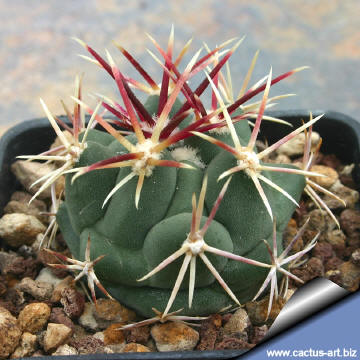 |
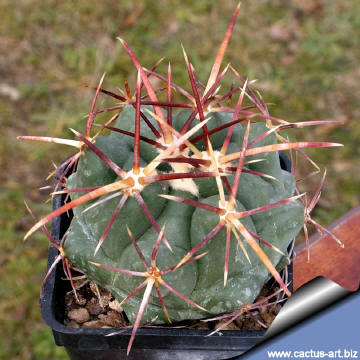 |
|
. |
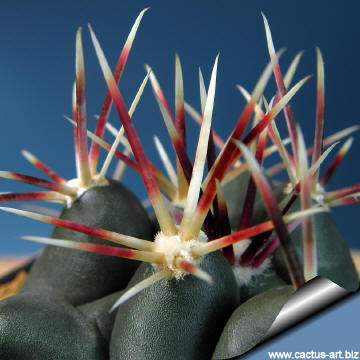 |
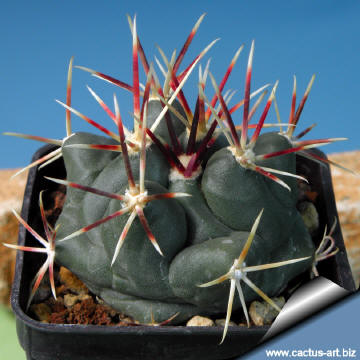 |
|
. |
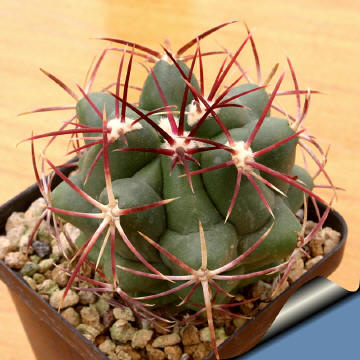 |
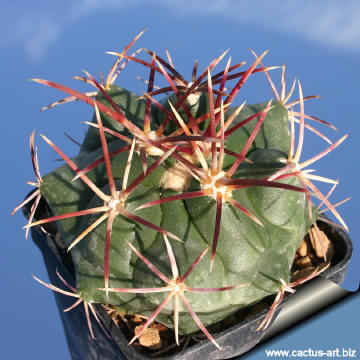 |
|
. |
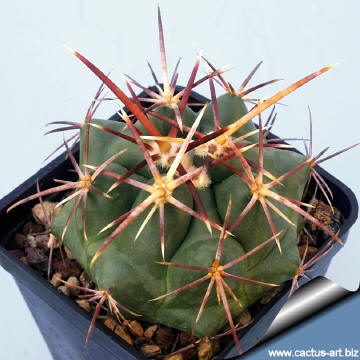 |
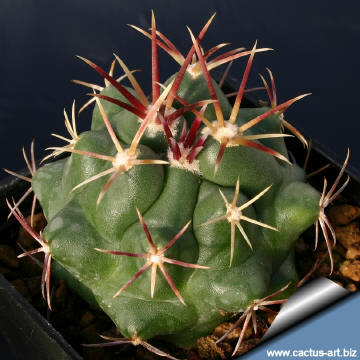 |
|
Advertising
|
|
|
|
|
Family:
Cactaceae (Cactus
Family)
Scientific name:
Thelocactus bicolor ssp.
heterochromus (Weber) Mosco & Zanovello
Published in: Bradleya 18: 62 (2000).
Basionym: Echinocactus heterochromus F.A.C.
Weber,
Dict. Hort. Bois. 466 (1896).
Lectotype: 3.5 km al Oeste de la Soledad, Durango, R.D.
Worthington 10902 (TEX).
Conservation status: Listed in
CITES appendix 2
Origin: Northeastern Mexico (Durango, Coahuila)
Habitat: Grows in matorral xerofilo on limestone hills.
Synonyms:
- Thelocactus heterochromus (Web.) Van Oosten
Kakteenkunde 58 (1940).
- Echinocactus heterochromus F. A. C. Weber
In: " French garden lexicon " 1896
- Thelocactus heterochromus (F. A. C. Weber) van
Oosten 1940
- Ferocactus heterochromus (F. A. C. Weber) N. P.
Taylor
Cact. Succ. J. Gr. Brit. 41: 90 (1979).
- Echinocactus bicolor var. pottsii Salm-Dyck,
Cact. Hort. Dyck. 173 (1850).
|
|
|
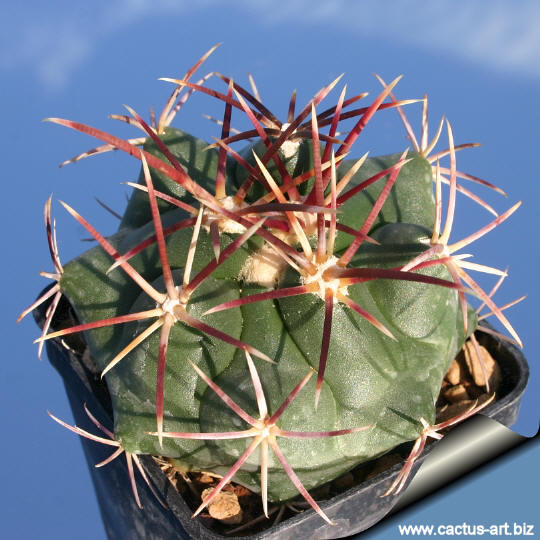
|
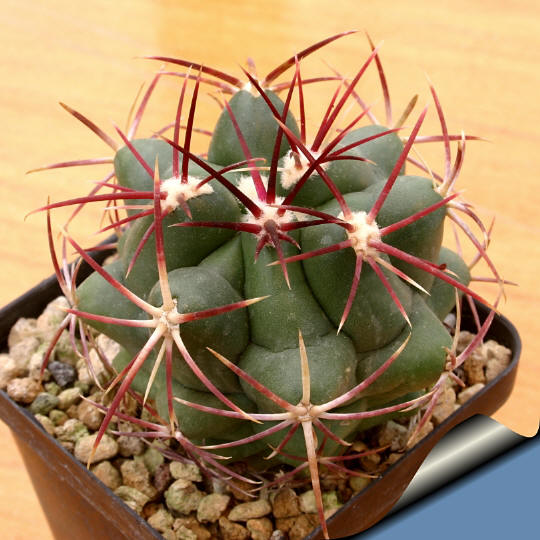
Thelocactus heterochromus Las Minas Navidad, Durango. Mexico |
|
Cultivation: It is a summer
grower species of low maintenance. Water regularly from Spring to
Autumn, but do not overwater, can become too elongated if compost is too
rich. Requires full sun or light shade and careful watering to keep
plant compact with strong coloured spines. Needs good drainage and very
porous potting mix, In Winter, keep dry.
Reproduction: From seed, since the plant rarely produces
plantlets.
This is one of most beautiful Thelocactus. But,
unfortunately, this plant is supplied only, rarely, sometimes by the
name
Thelocactus pottsii.
|
|
Photo of conspecific taxa,
varieties, forms and of
plants belonging to the Thelocactus
bicolor
complex
(This
Taxon has lots of
synonyms ( like many other
cacti) whit several controversial
varieties and subspecies and comprises a multitude of different
forms, but where each form is linked to others by populations of plants
with intermediate characteristics):
- T.
bicolor var. bicolor (Frost hardiness -7°C )
-
T. bicolor var. bolaensis (Frost hardiness -12°C ) Origin:
Coahuila from Sierra Bola, up to 20 cm tall.
-
T. bicolor var. commodus It has been described as
having only one, porrect, central spine, but with a careful
observation it is possible to notice that the upper central spines are
so appressed to the stem that they can be easily mistaken for radials.
- T. bicolor var. ellipticus is
referable to bicolor.
-
T. bicolor var. flavidispinus (Frost hardiness -12°C
) Texas 8cm in diameter, 5cm tall.
- T. bicolor
var. heterochromus
-
T. bicolor var. pottsii (Referable to bicolor var.
heterochromus).
- T. bicolor var. rhodophthalmus is referable to
bicolor.
-
T. bicolor var. schottii (Frost hardiness -12°C) coming
from the Big Bend area Texas, Chihuahua) characterized by a very long,
papery upper spine.
-
T. bicolor var. schwarzii 1 0° F (-12°C) Tamaulipas
- T. bicolor var. texensis is an invalid name
for a Texas form.
- T. bicolor var. tricolor (Frost hardiness -7°C ) A
form with bright red spines. Plants with these characters can be found
around Saltillo, Coahuila.
- T. bicolor var. zwakii, It is not sufficiently
distinct to deserve a subspecies rank.
Cultivars:
Thelocactus bicolor cv. INERMIS

 |
|